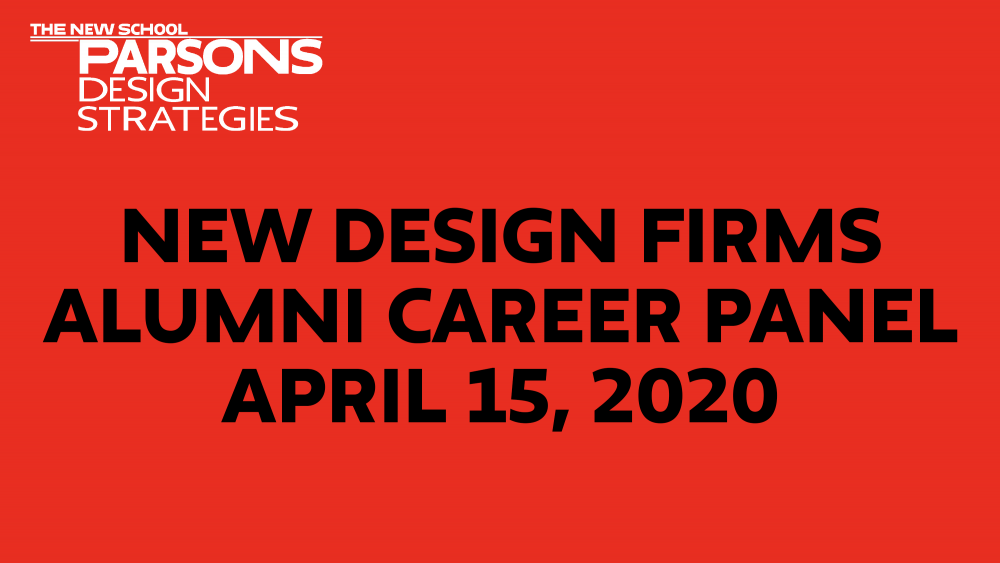New Design Firms Career Advising Panel

New Design Firms Career Advising Panel
On April 15th, 2020, the MS SDM hosted a Career Advising Panel with seven alumni of the program: Fernanda Flores (class of ’16), Sarmad Usman (class of ’17), Miranda Garrido (class of ’18), Silky Kadakia (class of ’19), Cristina Iregui (class of ’19), Jimmy Hagan (class of ’19), and Megan Staake (2nd year student). This panel provided career advice to current students, insight on the various trajectories that graduates’ career paths can take, and a window into careers in the post-COVID-19 world.
See the video at this link.
Panelist Q&As
Megan Staake
Q: What was the corporate design thinking curriculum at General Motors missing? Why do you think it was inadequate?
A: I think this is common across many large organizations deploying design thinking curriculum, but corporate training tends to be packaged into a 1-2 day overview training program. At best, you might spend a week on “special assignment.” These are great for deploying bottoms-up awareness and cultural adoption, but they don’t necessarily qualify you as an expert practitioner. So, it wasn’t that GM’s training was lacking. It served its purpose for sure. I was just curious to expand my knowledge and skills within the space so I could better serve my role as an internal innovation and strategy consultant.
Silky Kadakia
Q: Based on your experience in consulting, how are traditional management consulting firms evolving as design becomes a prominent management practice? Are they starting separate design practices or evolving the traditional management consulting practice?
A: There are three formats that I’m seeing with consulting bringing in design capabilities:
-
- Integrative model – design capabilities and traditional capabilities are embedded onto teams together, where reasonable; generally, companies that are doing this are building the design capabilities internally or are spending a lot of time on culture integration.
- Separate but together – companies that purchase an existing design agency or consultancy that essentially pull them in when necessary in the project. This is a result of different culture and difficulties fully integrating.
- Separated completely – companies that buy a design agency or consultancy and still functionally let them operate on their own, with their own teams, own clients
Overall this is what the current landscape looks like but with time, it will be important to evolve traditional management consulting practices to include non-traditional skillsets and ways of working. At Bain we emphasize the integrative model so that we’re going to our clients with the best of all of our skillsets and giving them a more well-rounded result.
Q: How did you get your first client when you went off on your own to consult?
A: Through my network! I had a lot of former co-workers and friends reach out to me once they knew I was looking for clients. The people you know are going to be the best advocates to others.
Q: What was your motivation to apply design strategy in management consultancy projects rather than creative consultancies, following your graduation?
A: Design strategy has always been about solving problems. I reflected on what types of problems I wanted to solve and where I could make the most impact. For me, I wanted to help those in most need of design strategy (e.g., traditional industries and companies) because it can have a transformative impact. It was also important for me to know that the creative ideas and solutions I put forth were reasonable, feasible, and aligned to business value. As a result, I found it much more powerful to go to clients with the big picture concepts of how to solve their problem but alongside a business model to support that idea. I came from a world of management consulting so I knew what that could look like and how I could bring my unique skillsets to teams.
Q: You are providing design solutions for diverse industries in diverse countries at Bain. How do you find applying design strategies for different cultures?
A: User research is key! It is imperative for us to thoroughly understand what are the distinct needs, challenges, and cultural considerations for anything we pitch. Something that works in the US will not work internationally somewhere and vice versa. On my first project, we had a client that was keen to use the idea of super apps that work ridiculously well in eastern countries in the US. We made sure to have robust conversations with them on why culturally those do not find success in the US and how the user experience expectations are different for our customers here. Doing thorough research on the client, country circumstances, and users helps you understand how you need to design and strategize differently. When possible, we look to involve someone from our local office in that country to help us here too!